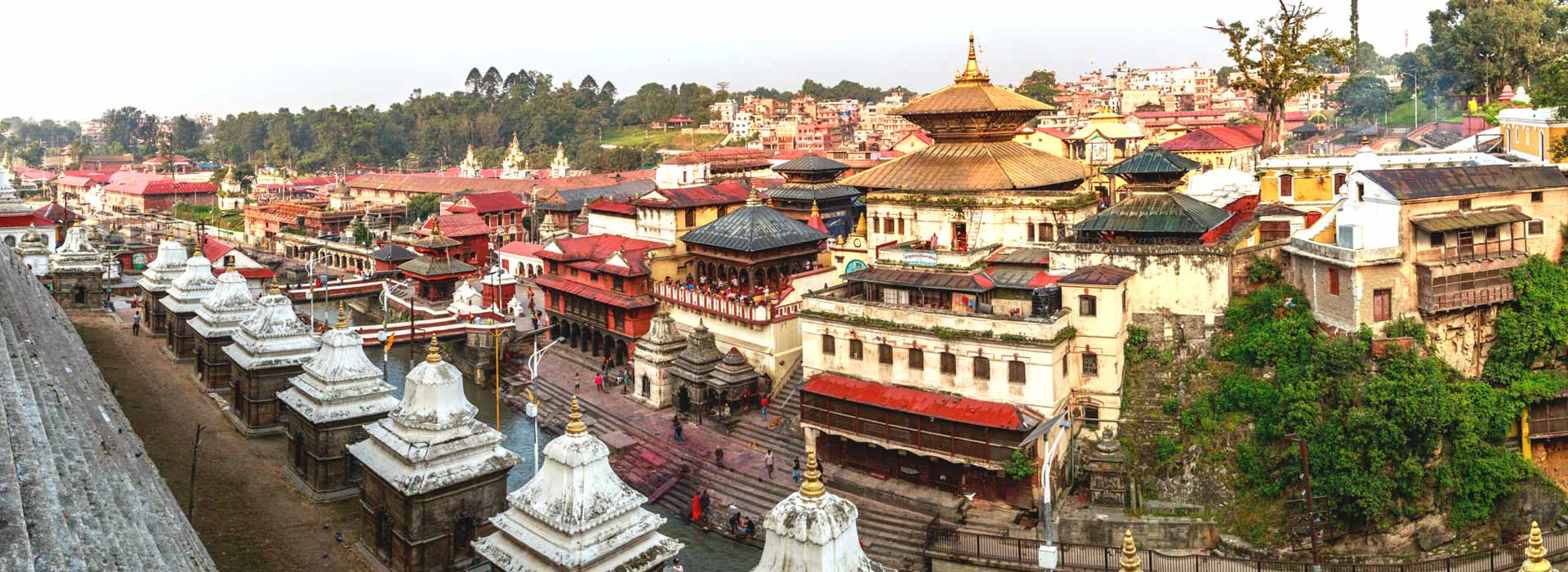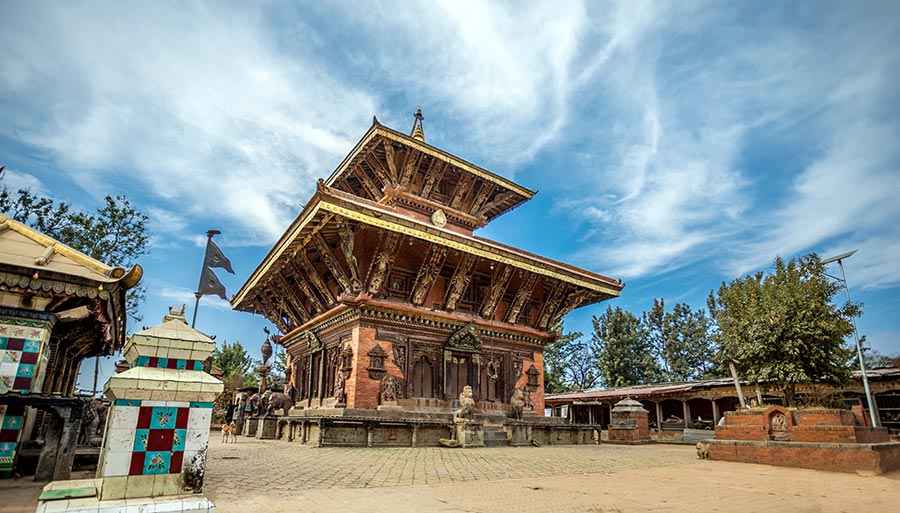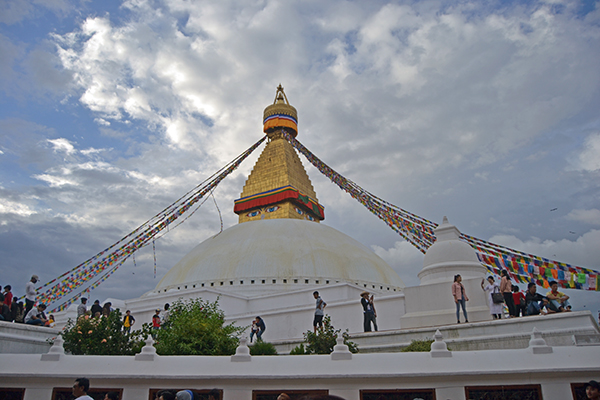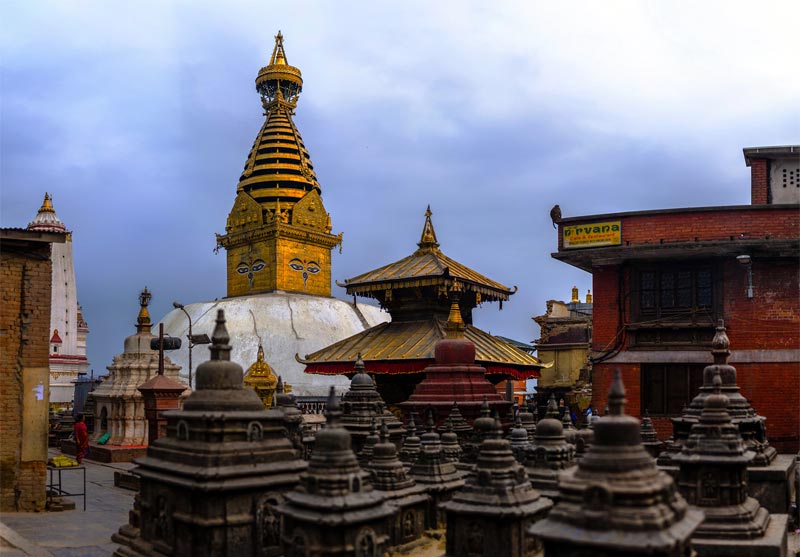Places to visit in Nepal
Nepal is the land of wonderful natural and cultural heritage. There are numerous places to visit during your stay in Nepal. Pashupatinath, Boudhanath, Swayambhunath, Kathmandu Durbar Square, Patan Durbar Square, Bhaktapur Durbar Square, and Changunarayan Temple are the seven monument sites under Kathmandu Valley. The birthplace of Gautama Buddha -Lumbini, is also on the list of UNESCO World Heritage Cultural Sites. Whereas, the Sagarmatha National Park and Chitwan National Park are under UNESCO World Heritage Natural Sites. Besides the UNESCO-listed sites, there are several historically and culturally important places to visit in Kathmandu and inside the Kathmandu valley.
UNESCO World Heritage site as the major places to visit in Nepal
Kathmandu Durbar Square
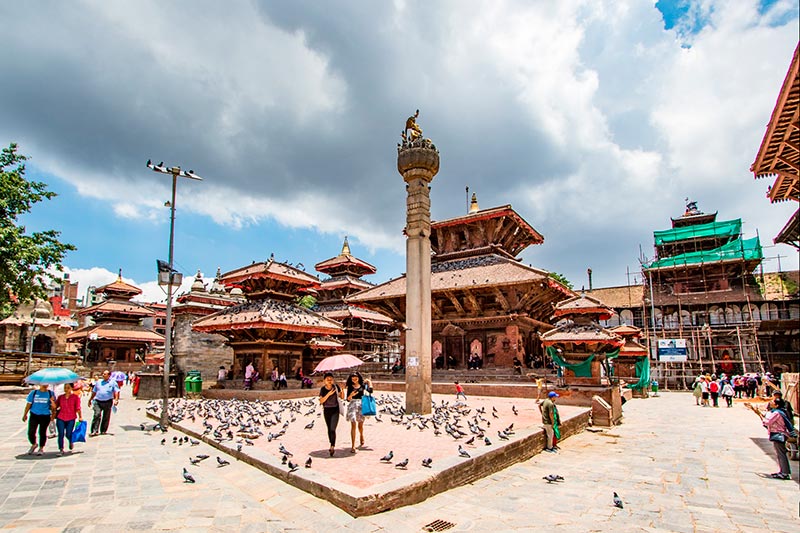
Pashupatinath Temple
Kathmandu Heritage Tour – Pashupatinath Temple
Bhaktapur Durbar Square
Bhaktapur is an important Newari town and the third-largest city in the Kathmandu Valley. It was the capital of Nepal during the great Malla Kingdom. The kingdom lasted until the second half of the 15th century.
Down the hill of Changunarayan lays the former kingdom of Bhaktapur. The city is famous because the Durbar Square has well been restored: the Palace of 55 Windows, the Taleju Temple, and the Royal Bath.
Bhaktapur is also the land of the Nyatapola Temple. Nyatapole, a five-pagoda temple 35 meters high, one of the most beautiful examples of Nepalese architecture is an icon of Bhaktapur. Pottery art being practiced for centuries is a famous part of Bhaktapur city.
Bhaktapur is famous as a heritage city. It has a well-preserved ancient city and is home to traditional art and architecture, historical monuments and crafts, pottery, and weaving industries. The town has successfully preserved its rich local culture, festivals, and mystical music traditions.
Nepalese potter crafting a vase on the street in Bhaktapur, Nepal
You will admire the temple’s magnificent artworks created in metal and wood. The inscription proves the establishment time of the sacred site of Changu Narayan was the 5th century A.D. It is one of the finest examples of Nepalese architecture. The first epigraphic evidence of Nepalese history found in the temple dates to the reign of the first historical king of Nepal, Licchavi King Mandeva in 464 A.D.
Changu Narayan Temple
It takes approximately 45-minute time by private vehicle to reach the ancient hilltop temple of Changu Narayan from the center of Kathmandu. Based on the evidence, the Changunarayan temple is the oldest in Nepal. The temple is notably famous for the woodcarvings which decorate the two pagodas. From Changunarayan one can see a large panorama of the Himalayan Range if the weather is clean. Changu Narayan Sightseeing tour is the best program to experience the essence of the historical sites of Nepal.
Lalitpur is also known as Patan Durbar Square
Patan Durbar Square
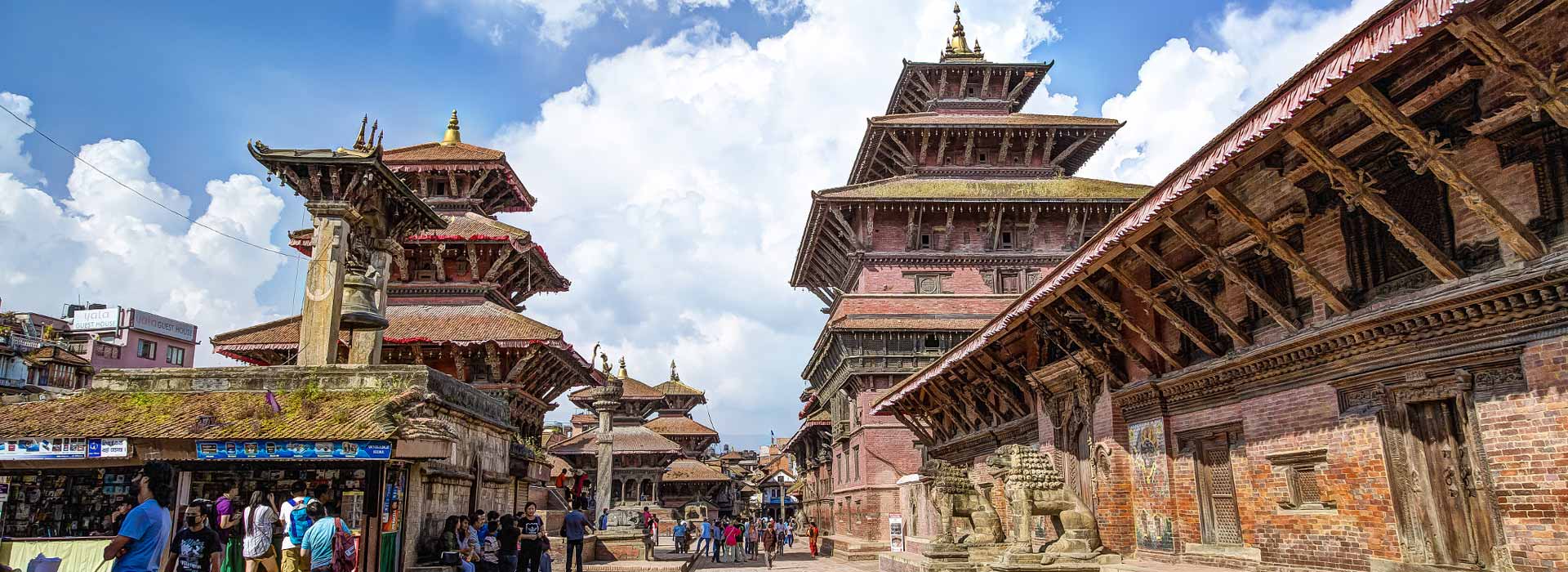
Budhanilkantha
The famous temple of Budhanilkantha lies at the northern outskirt of Kathmandu which is approximately 11 km from the city center. Budhanilkantha is a huge and unique monolithic statue of sleeping Vishnu on the Shesh Saiya (snake bed) existing since the 6-7th century during the Lichchhavi period. However, Budhanilkantha is a Baisnav Temple, Shaiva and Baisnav sect of Hinduism and Buddhists jointly worship it. Buddhist people worship the idol of sleeping Vishnu as a sleeping Buddha.
Bouddhanath
Bouddhanath is one of the largest stupas in Nepal. It is located on the northeastern outskirts, just 11 kilometers away from the heart of Kathmandu. The stupa is constructed in the middle of a massive mandala. Bouddhanath stupa is one of the largest stupas in the world. It is also known as the Khasa Chaitya, Khasti in the Newari language, and Jarung Khasor in the Tibetan language.
Boudhanath Stupa/Khasa Chaitya/Khasti Chaitya/Jarung Khasor
The stupa has got a unique architecture. The flapping prayer flags decorate the giant stupa tied from its pinnacle to the edges. Its view dominates the skyline luring the visitors. The stupa entombs the relics of Kassapa Buddha, people believe. Kassapa Buddha is the third Buddha of the current Bhadrakalpa. The stupa is one of the major attractions for foreign tourists to Nepal
Swayambhu
Swayambhunath (Monkey Temple)
Swoyambhunath Kathmandu Valley SightseeingSwayambhunath includes a Buddhist stupa as the main temple. It has got several buildings and monuments in it. The most ancient Swayambhunath Hillock is older than the Kathamndu Valley itself. The natural rocky hillock is regarded as a self-originated stupa. It is older than Buddhism itself.
According to Swayambhu Purana, the entire valley was once filled with an enormous lake, out of which grew a lotus. The valley came to be known as Swayambhu, meaning “Self-Created.” The name comes from an eternal self-existent flame (swayaṃbhu) over which a sūpa was later built.
Why do people call Swayambhunath the Monkey temple?
Swayambhunath is also known as the Monkey Temple as holy monkeys are living in the northwest parts of the temple. They are holy because Manjushri, the bodhisattva of wisdom and learning, was raising the hill on which the stupa stands. He was supposed to leave his hair short but he made it grow long and head lice grew. It says that the head lice transformed into these monkeys.
Manjusri had a vision of the Lotus at Swayambhu and traveled there to worship it. Seeing that the valley could be a good settlement, and to make the site more accessible to human pilgrims, he cut a gorge at Chovar. The water drained out of the lake, leaving the valley in which Kathmandu now lies. The Lotus was transformed into a hill and the flower became the stupa.
Manjushree, Kathmandu Valley, and the Swayambhunath
According to Swayambhu Purana, the entire valley was once filled with an enormous lake, out of which grew a lotus. The valley came to be known as Swayambhu, meaning “Self-Created.” The name comes from an eternal self-existent flame (swayaṃbhu) over which a sūpa was later built.
Manjusri had a vision of the Lotus at Swayambhu and traveled there to worship it. Seeing that the valley could be a good settlement, and to make the site more accessible to human pilgrims, he cut a gorge at Chovar. The water drained out of the lake, leaving the valley in which Kathmandu now lies. The Lotus was transformed into a hill and the flower became the stupa.
The story behind the holy monkies
As holy monkeys are living in the northwest parts of the temple, people understand Swayambhunath with the name of Monkey Temple. They are holy because Manjushri, the bodhisattva of wisdom and learning, was raising the hill on which the stupa stands. He was supposed to leave his hair short but he made it grow long and head lice grew. It is said that the head lice transformed into these monkeys.
Manjusri had a vision of the Lotus at Swayambhu and traveled there to worship it. Seeing that the valley could be a good settlement, and to make the site more accessible to human pilgrims, he cut a gorge at Chovar. The water drained out of the lake, leaving the valley in which Kathmandu now lies. The Lotus was transformed into a hill and the flower became the stupa.
Both Hindus and Buddhists equally visit the area to worship. It showcases perfect religious harmony in Nepal’s societies.
Attractions and highlights
- The huge gold plated Vajra ‘thunderbolt’ set on the east side of the stupa
- Buddha statue on the west side of Swayaṃbhu
The Sleeping Buddha
The Dewa Dharma Monastery noted for a bronze icon of Buddha and traditional Tibetan paintings
The temple is dedicated to Harati, the goddess of all children. Lord Buddha converted her from ogress to be the caretaker of all the children by Lord Buddha. Hinduism followers worship Harati as Saraswati, the goddess of knowledge and wisdom.
Places to visit in Nepal – outside Kathmandu
Lumbini
Lumbini is one of the major sites to visit in Nepal outside of Kathmandu. Siddhartha Gautama, who later became known as the Enlightened One (the Buddha), was born in Lumbini. After gaining supreme enlightenment in Bodh Gaya, he taught the Dhamma of freedom from suffering for 45 years. According to Buddhism literature, before his Mahaparinirvana he spoke to his disciple Ananda that the four places the sight of which should arouse a sense of urgency in the faithful:
The places where the Tathagata, was born (Lumbini), attained supreme enlightenment (Bodh Gaya), set in motion the Wheel of Dhamma (Sarnath), and entered Mahaparinirvana (Kushinagar)
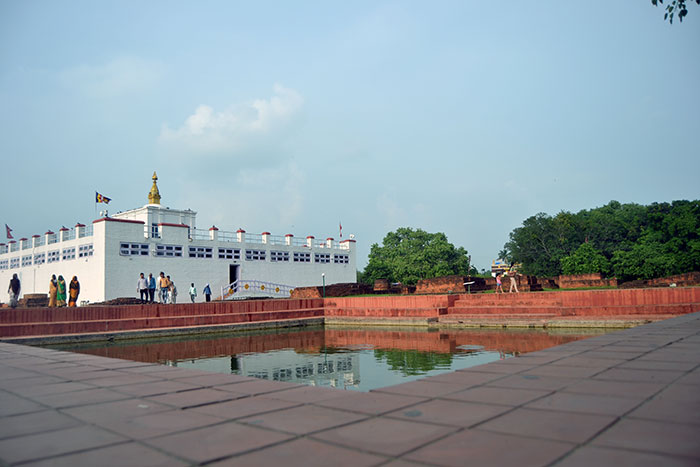
Significance of Lumbini
The Lord Buddha was born in 623 BC in the sacred area of Lumbini located in the Terai plains of southern Nepal, testified by the inscription on the pillar erected by the Mauryan Emperor Asoka in 249 BC. Lumbini is one of the holiest places of one of the world’s great religions, and its remains contain important evidence about the nature of Buddhist pilgrimage centers from as early as the 3rd century BC.
The complex of structures within the archaeological conservation area includes the Shakya Tank; the remains within the Maya Devi Temple consisting of brick structures in a cross-wall system dating from the 3rd century BC to the present century and the sandstone Ashoka pillar with its Pali inscription in Brahmi script. Additionally, there are the excavated remains of Buddhist viharas (monasteries) from the 3rd century BC to the 5th century AD and the remains of Buddhist stupas (memorial shrines) from the 3rd century BC to the 15th century AD.
The site is now getting all the developments and publicity as a Buddhist pilgrimage center, where the archaeological remains associated with the birth of the Lord Buddha form a central feature. As the birthplace of the Lord Buddha, testified by the inscription on the Asoka pillar, the sacred area in Lumbini is one of the holiest and most significant places for one of the world’s great religions.
The archaeological remains of the Buddhist viharas (monasteries) and stupas (memorial shrines) from the 3rd century BC to the 15th century AD, provide important evidence about the nature of Buddhist pilgrimage centers from a very early period. Source: https://whc.unesco.org
Now, several countries have constructed monasteries on the premises that reflect their original architects supporting the message of world peace.
Ramagram Stupa
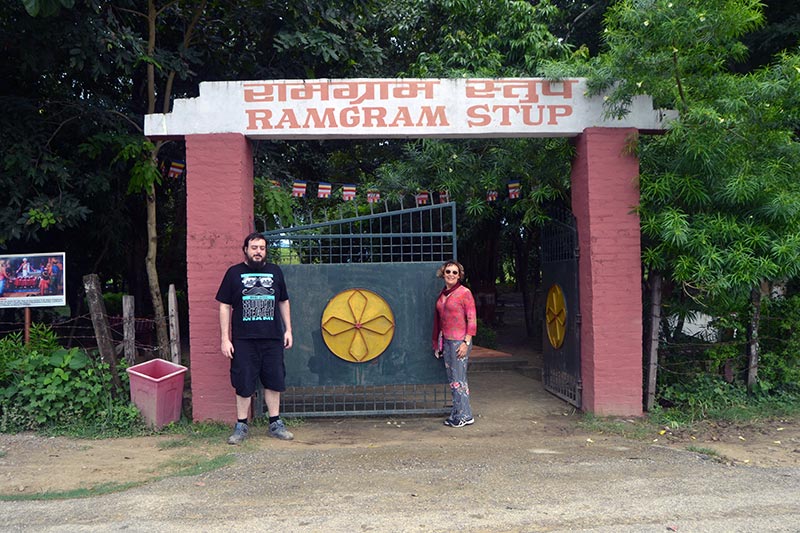
Ramgram Stupa is another best place to visit in Nepal. After the Mahaparinirvana of Lord Buddha in Kushinagar in 543 BC, eight great kings sent their envoys to Kushinara (present-day Kushinagar, India) and demanded a piece of Buddha’s relic for their kingdoms. Malla king of Kushinara denied giving any of Buddha’s relics to other kings saying that Lord Buddha came to his kingdom and attained Mahapariniravana, so Lord Buddha’s relics belong to his kingdom. He asked other kings if they discover diamonds and gold in their kingdoms, would they share it with other kings. Kings of 7 kingdoms were ready to fight with Kushinara to get a piece of Buddha’s relic.
An omniscient Brahmin “Drona” also came to Kushinagar to pay homage to Buddha’s last rites. He had thought that if war wages for the sake of Buddha’s relics after his Mahaparinirvana, it is against what Buddha preached throughout his entire life after enlightenment. So, the monk Drona conveys the message of Buddha to the Malla King of Kushinara and requested him to equally distribute Lord Buddha’s relics to other kings and prevent bloodshed. King of Kushinara felt remorse for his selfishness and agreed to distribute Buddha’s relics to other kings and follow the path of Buddha’s non-violence principle.
Distribution of Buddha’s relic
The royal monk asks all the Kings to come to the place where Buddha’s relics were. He gave one piece of Buddha’s relics to each of the 8 kings in his presence of all the kings. One of seven other kings who received Buddha’s relic was Koliya king of Ramagram. He brought relics with great joy and paraded through the city before resting them in a huge stupa. He built the great Mahastupa enshrining Buddha’s relic across the Jharahi river in Ramgram.
Only the unopened relic stupa
The Mahaparinirvana Sutra says that of the Buddha’s four tooth relics, one rests in Ramgram. Ramgram Stupa is the only unopened Stupa with a Buddha relic. This is the one among 8 relic stupas that were constructed by eight princes right after the ‘Mahaparinirmana’ of Buddha. Emperor Ashoka (302 – 232 BCE) opens all 7 stupas containing Buddha’s relics and built 84,000 stupas to house these relics. But the time he visits Ramgram to get the relic of Buddha, he witnesses the Naga king guarding the stupa and elephants offering flowers and sprinkling water. Seeing the great devotion of the Naga king and wild animals to the stupa, Ashoka decides to leave it as it is.
Among the original eight stupas with Buddha’s relics, the Ramgram stupa is the only one that can be seen in its original form. Ramgram was a village under the Devdaha kingdom, the maternal home of Lord Buddha. While the excavation of the area was going on several other ruins have been discovered.
Devdaha – maternal home of Lord Buddha
Ramgram was a village under the Devdaha kingdom, the maternal home of Lord Buddha. While the excavation of the area was going on several other ruins have been discovered.
Like many other monuments from Buddha’s time, Ramgram Stupa was also in a pity state with just a raised dome visible in the field. The primary excavation has unearthed important evidence of the existence and worshiping of Stupa from around the time of Buddha.
‘Lumbini Development Trust’ owns the stupa areas including the surrounding. The trust has well preserved the stupa. The small park has a platform to meditate or make offerings. One can easily circumnavigate the stupa remains.
The stupa is about 35 km east of Lumbini and about 9 km from the east-west highway. It would be easy to visit the Stupa on the way to Lumbini from Kathmandu or while driving back.
Kapilbastu
Among many places to visit in Nepal, Kapilbastu is significant after Lumbini. Gautama Buddha, is a prince who left his luxury in search of solutions that can cure diseases, suffering, and death. A prince who could have enjoyed his royal dynasty, but he chose the path full of thrown, pain, and darkness. At the age of 34, he attained the supreme enlightenment at Bodh Gaya. When prince Siddhartha Gautama left his kingdom Shakya for discovering solutions to make life free from suffering, he was just 29 years old.
At Kapilavastu, the Lord Gautama Buddha grew up and led a family life with his wife and son Rahul till he left for Nirvana. The Ashoka Pillar situated at Kapilavastu marks the latter reference about the place. This place is located in the Himalayan ranges of Nepal. Kapilavastu is the district and comes under Lumbini Zone, Nepal.
The followers of Buddhism and, the tourists willing to observe the peace and enlightenment always prefer to visit the sacred place. Buddha’s deep philosophy engrosses the site.
Wildlife Safari
Chitwan National Park
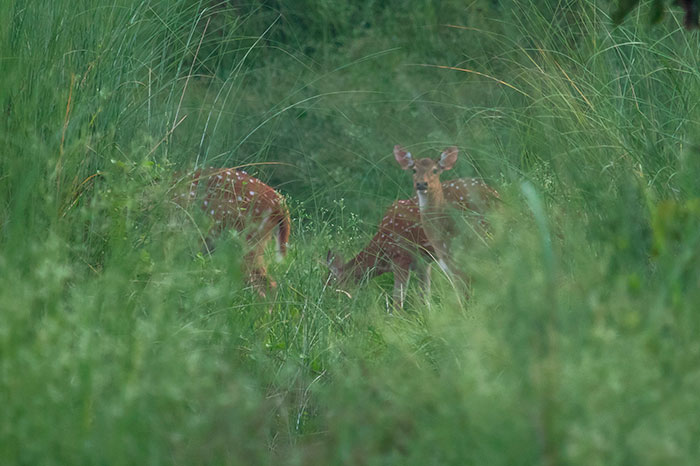
Among the most attractive places to visit in Nepal, Chitwan National Park is the best destination for a wildlife tour in Nepal. Covering an area of 934 sq km, Chitwan is on the list of UNESCO World Heritage Natural Sites. The national park is home to a wide and rich variety of flora and fauna and is a safe shelter for endangered like one-horned rhinoceros. Chitwan National Park houses 544 species of birds and it would demand two days to explore this national park.
The facility of budget to high-end resorts serves all kinds of tourists willing to go for wildlife tours. Along with pampering you with all the state-of-the-art services, these hotels and resorts arrange excellent wildlife safaris for their guests. For backpackers, on the other hand, Sauraha is the place to find accommodation, this small village is replete with budget-friendly hotels that are ideal for anyone on a shoestring budget and who want to explore Chitwan National Park.

